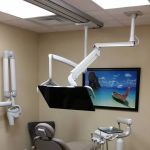- 1-Importance-of-Oral-Hygiene-with-Dental-Bridges
- 2-Daily-Cleaning-Techniques-for-Dental-Bridges
- 3-Tools-and-Products-to-Maintain-Bridge-Health
- 4-Common-Challenges-and-How-to-Overcome-Them
- 5-Professional-Care-and-Regular-Checkups
1. Importance of Oral Hygiene with Dental Bridges
Maintaining excellent oral hygiene is crucial for anyone with dental bridges. Dental bridges restore missing teeth by anchoring artificial teeth to neighboring natural teeth, creating areas where food particles and plaque can accumulate easily. Without proper care, these areas become breeding grounds for bacteria, which can lead to gum disease, tooth decay, and even bridge failure.
Good oral hygiene not only prolongs the life of your dental bridge but also ensures overall oral health. For example, Mr. Ahmed, a patient who neglected his bridge hygiene, faced inflammation and discomfort that required bridge replacement. His experience underscores why consistent care is essential.
2. Daily Cleaning Techniques for Dental Bridges
2.1 Brushing Around the Bridge
Brush your teeth at least twice a day using a soft-bristled toothbrush. Pay special attention to the areas around the dental bridge, especially the pontic (false tooth) and the abutment teeth (supporting natural teeth). Gentle brushing helps remove plaque buildup and prevents gum irritation.
2.2 Flossing with a Bridge
Flossing is vital to clean beneath the bridge. Using floss threaders or specialized dental floss designed for bridges allows you to remove trapped food and plaque from under the pontic, an area otherwise difficult to reach with regular floss.
3. Tools and Products to Maintain Bridge Health
3.1 Interdental Brushes and Water Flossers
Interdental brushes can clean between teeth and around the bridge effectively. Water flossers offer a gentle yet powerful stream of water to flush out debris from hard-to-reach spaces under the bridge, promoting healthier gums.
3.2 Antimicrobial Mouthwashes
Using antimicrobial or fluoride mouthwashes can reduce bacterial growth and strengthen tooth enamel around the bridge. Choose alcohol-free formulas to avoid dryness and irritation.
4. Common Challenges and How to Overcome Them
4.1 Difficulty Accessing Hard-to-Reach Areas
Cleaning underneath the bridge can be challenging. Patience and the right tools, like floss threaders or water flossers, make a big difference. Setting a routine and dedicating time to oral care ensures these areas are not neglected.
4.2 Sensitivity and Discomfort
If you experience sensitivity or discomfort, consult your dentist. Sometimes, improper fit or inflammation requires adjustment or professional cleaning to resolve.
5. Professional Care and Regular Checkups
5.1 Importance of Dental Visits
Regular dental visits for professional cleaning and examination are essential. Dentists can detect early signs of problems and perform deep cleaning that’s not possible at home. Mr. Ahmed’s case improved significantly after he began scheduling consistent dental checkups.
5.2 When to Seek Professional Help
If you notice persistent bad breath, pain, swelling, or loosening of your bridge, seek immediate dental advice. Early intervention can save your dental bridge and protect your natural teeth.
5.3 Find Expert Support
For comprehensive guidance and trusted products to maintain your dental bridge, Dentistry Toothtruth offers expert recommendations and support tailored to your needs.







 Great Expressions Dental Centers - Newnan4.0 (372 review)
Great Expressions Dental Centers - Newnan4.0 (372 review) Simply Dental Clinic0.0 (0 review)
Simply Dental Clinic0.0 (0 review) Lakemoor Dental : Family, Orthodontics & Implant Dentistry4.0 (246 review)
Lakemoor Dental : Family, Orthodontics & Implant Dentistry4.0 (246 review) Henry J. Austin Health Center at Ewing Street3.0 (33 review)
Henry J. Austin Health Center at Ewing Street3.0 (33 review) Barkley Pediatric Dentistry4.0 (352 review)
Barkley Pediatric Dentistry4.0 (352 review) Smiles on Randall4.0 (420 review)
Smiles on Randall4.0 (420 review) The Importance of Oral Health Education During Pregnancy for a Healthy Pregnancy
The Importance of Oral Health Education During Pregnancy for a Healthy Pregnancy Best Tips for Brushing Your Teeth Properly for Healthy Gums: Essential Techniques for Oral Health
Best Tips for Brushing Your Teeth Properly for Healthy Gums: Essential Techniques for Oral Health Why Skipping Dental Checkups Can Lead to Bigger Oral Health Problems
Why Skipping Dental Checkups Can Lead to Bigger Oral Health Problems Advantages of Porcelain Dental Restorations
Advantages of Porcelain Dental Restorations How Can Diabetes Cause Tooth and Gum Problems? Preventing and Managing Oral Health Issues
How Can Diabetes Cause Tooth and Gum Problems? Preventing and Managing Oral Health Issues Healthy Habits for Promoting Good Oral Health and Hygiene: Tips for a Healthy Smile
Healthy Habits for Promoting Good Oral Health and Hygiene: Tips for a Healthy Smile